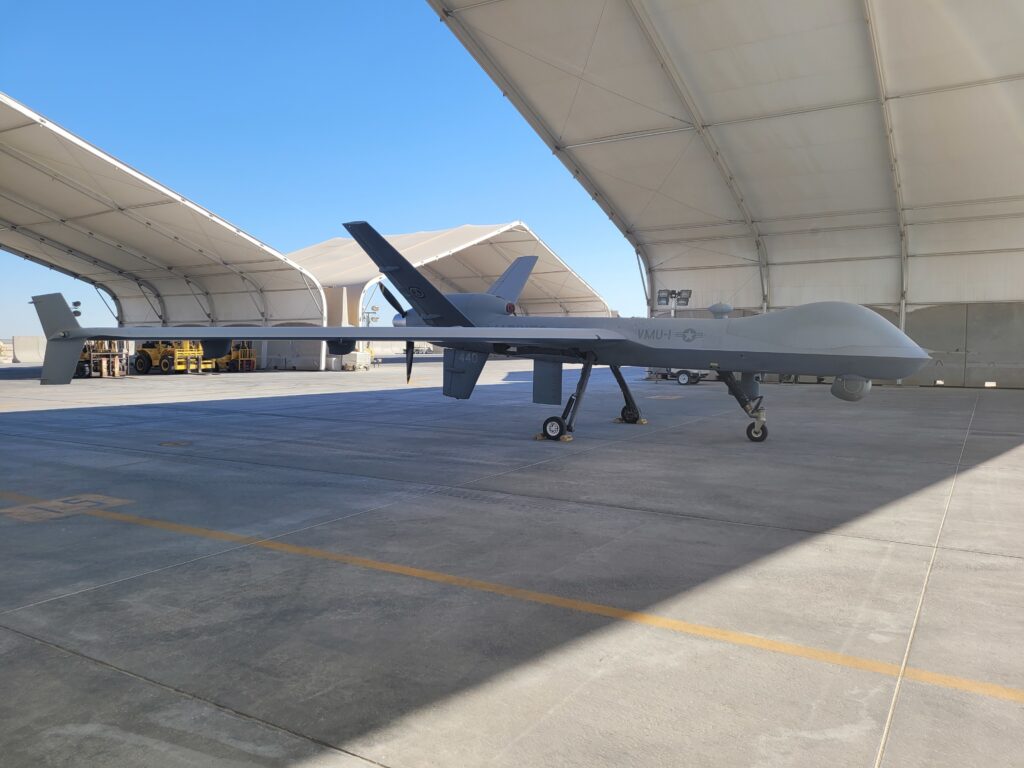
ARLINGTON, Va. — The U.S. Air Force wants to retire its MQ-9 Reapers by 2035 but an aerospace think tank says the drone fleet should be retained and modernized for new missions already challenging the sea services, such as maintaining domain awareness in the Arctic.
Facing severe future budget constraints while trying to fund modernization programs like the B-21 long range strike bomber, Air Force planners are considering retiring legacy aircraft they believe cannot survive in a high-end fight, like General Atomics Aeronautical Systems’ intelligence, surveillance, reconnaissance (ISR) and targeting drone.
While armed with Hellfire missiles, as well as ISR sensors and cameras, the RQ-9 has no defensive measures, except a counter-jamming pod, to keep it safe in contested airspace.
Rather than send its entire 280-Reaper fleet to the boneyard by 2035, the Air Force should upgrade it for a list of new missions such as air and missile defense, and communications relays, the Mitchell Institute for Aerospace Studies recommends in a paper, “Reimagining the MQ-9 Reaper,” by retired Air Force Major Gen. Lawrence Stutzriem.
“Reaper is more relevant today than most of the other aircraft that are in development or on the ramp,” Stutzriem, the institute’s director of research, told a livestreamed audience at the paper’s Nov. 19 virtual rollout. “And there’s a broad range of existing and new requirements that it could be used to fill in the future.”
The Navy and Coast Guard are focusing on the Arctic region as a contested area fraught with extreme weather conditions, immense distances and limited infrastructure — there is no port for deep water vessels within 1,000 miles of Alaska’s Arctic coast. Coast Guard officials have said communications are sketchy or nonexistent in the latitudes above 72 degrees north, and the Navy has no ice-hardened ships. The Coast Guard has just one heavy ice breaker, and new ones authorized by Congress won’t be ready for several years.
Meanwhile, Russia has built or reopened several military bases on islands along its Arctic coastline. Both Russia and China have built new fleets of ice breakers, some of them nuclear powered. Russia’s new Ivan Papanin-class multirole, icebreaking patrol vessels can be equipped with cruise missiles.
Recent technological enhancements to the MQ-9 “make it an attractive option for improving Arctic domain awareness,” Stutzriem’s paper says. General Atomics has tested an extended-wing variant of the Reaper that increases the drone’s endurance from 27 to over 40 hours. That would be a significant step for conducting ISR in the vast Arctic region. The MQ-9B SkyGuardian variant features an electro-expulsive de-icing system and an anti-ice heated engine inlet, important qualities for Arctic operations.
The MQ-9 can contribute to emerging high end missions as the U.S. military shifts to a mobile, widely dispersed force in the Indo-Pacific region to counter and deter adversaries, said Bryan Clark of the Hudson Institute, one of three other think tank analysts at the roll out who supported the continuing need for the MQ-9. To impose deterrence by detection, “I think the MQ-9 could contribute there quite a bit,” since it has targeting as well as ISR capabilities, Clark said. The Marine Corps has acquired three Reapers after three years of testing and planning with leased aircraft to see how they will fit into the commandant’s force design of small units, widely dispersed and armed with long-range fires to control access to sea lanes.
With a targeting mechanism for counter maritime operations, “they’ve got the whole kill chain with missiles ashore, with the naval strike missile, that will allow them to close that kill chain and actually achieve some of that deterrent effect that detection might provide,” Clark said.
- Shall We Play a Game? Winning Isn’t the Point, Experts Say - April 5, 2023
- U.S. Goal: Maintaining Extended Presence in Arctic’s Harsh Environment - April 4, 2023
- Joint, Combined Exercise Shows Marine Littoral Regiment Idea is on ”Right Track’ - February 24, 2023






